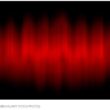FCC bans authorization of new ‘covered’ products from five Chinese vendors
FCC commissioners unanimously ruled that the agency will not authorize five China-based vendors to market and sell telecommunications and video-surveillance equipment that would be used for public-safety, key security initiatives or other purposes impacting national security.
All four FCC commissioners announced support for the report and order—as well as the accompanying further notice of proposed rulemaking—that is expected to have the practical impact of limiting the ability of Huawei, ZTE, Hikvision, Dahua and Hytera to offer new products in the U.S. that leverage broadband connectivity. Without equipment authorization from the FCC, vendors are prohibited importing and selling most communications gear in the United States.
Congress directed the FCC to take such action associated with its “covered list” in legislation enacted last year.
FCC Chairwoman Jessica Rosenworcel said that the FCC action regarding the Chinese vendors addresses a loophole in previous policies that many members of Congress noted in passing the legislation, which is designed to address “an unacceptable risk” to U.S. national security.
“While we’ve flagged equipment as posing a national security risk, prohibited companies from using federal funds to purchase them, and even stood up programs to replace them, for the last several years, the FCC has continued to put its stamp of approval on this equipment through its equipment-authorization process,” Rosenworcel said in a prepared statement. “So long as this equipment carries that stamp, it can continue to be imported into the United States and sold to buyers who are not using federal funds.
“But that does not make any sense. After all, there is little benefit in having these lists and these bans in place just to leave open other opportunities for this equipment to be present in our networks. So today, we are taking action to align our equipment authorization procedures with the rest of our national-security policies.”
Released last Friday, the FCC order prohibits the authorization of certain equipment from the five China-based companies—all included in the FCC’s “covered list” of vendors deemed to be national-security threats—that is used for specific purposes.
“That includes telecommunications and video-surveillance equipment from Huawei and ZTE,” Rosenworcel said. “It also includes telecommunications and video surveillance equipment from Hytera, Hikvision, and Dahua that is used for the purpose of public safety, security of government facilities, physical surveillance of critical infrastructure, and other national-security purposes. For these three companies, we will require them to document what safeguards they will put in place on marketing or sale for these purposes and we are putting in place a freeze on all of their telecommunications and video surveillance equipment authorization applications until that work is done.
“The action we take today covers base-station equipment that goes into our networks. It covers phones, cameras, and Wi-Fi routers that go into our homes.”
With Huawei and ZTE already subject to a “rip and replace” program being coordinated by the FCC, many industry sources believe the greatest new impacts from the new order will be felt by Hikvision and Dahua, two China-based manufacturers of video-surveillance cameras. Both companies claimed that their cameras are not part of core networks and should not be subject to the covered list, but the FCC disagreed.
“The term ‘communications equipment or service’ means any equipment or service used in fixed and mobile networks that provides advanced communications service, provided the equipment or service includes or uses electronic components,” according to the FCC’s report and order. “We also reject Hikvision USA’s further contention that video-surveillance equipment is not ‘used in’ fixed and mobile networks, and Hikvision’s and Dahua’s assertions that such equipment is only ‘peripheral’ equipment and not network equipment and hence not ‘covered.’
“In identifying such equipment as covered communications equipment under the Secure Networks Act, … Congress intended to capture such video surveillance equipment as ‘covered’ equipment, even if is not core network equipment, since the equipment is used (and indeed required) in the provision of a certain type of advanced communications service, i.e., video-surveillance services.”
Hytera’s body-camera offerings also are “covered” items, according to the order. Hytera’s narrowband-only LMR devices do not appear to be subject to the authorization ban, but the language in the order seems to prohibit the vendor from introducing hybrid devices—LMR devices that include LTE or Wi-Fi connectivity—into the U.S. market.
“We conclude that handset equipment designed for operation over broadband networks and that enable users to originate and receive high quality voice, data, graphics, and video telecommunications with connection speeds of at least 200 kbps in either direction fall within the broad scope of our interpretation of ‘telecommunications equipment’ and is ‘covered,’” the FCC order states. “Accordingly, we note that Huawei and ZTE handsets, and Hytera handsets—to the extent designed to operate over broadband networks—are ‘covered.’”
Hytera noted this in a prepared statement about the FCC action.
“The commission set a bright line, ruling broadband-capable equipment as Covered and equipment that cannot transmit or receive at 200 kbps or above is categorically not Covered Equipment,” according to the statement on the Hytera US website. “The Report and Order makes it clear that the vast majority of Hytera’s product offering is not Covered equipment.”
FCC Commissioner Brendan Carr indicated that that he supports the notion that more equipment from China-based companies could be subject to the FCC authorization ban in the future, although he did not specify what kind of gear could be impacted.
“One near-term action that I recommend is for the commission to work with the national-security agencies to expand the scope of equipment from Hikvision, Dahua, and Hytera—entities with deep ties to Communist China’s surveillance operation—that should be included on our Covered List,” Carr said in a prepared statement. “This would further strengthen our equipment authorization actions and allow us to prohibit the use of Hikvision, Dahua, and Hytera equipment in an even broader set of circumstances.”
In its report and order, the FCC called for an immediate freeze of authorizations associated with “covered” equipment from the five China-based vendors. In addition to taking this action on potential future products, the ruling includes language expressing the agency’s belief that it can revoke existing equipment authorization from these Chinese manufacturers.
“The Commission has authority to revoke, in the future, authorizations of ‘covered’ equipment that had been authorized prior to adoption of this report and order,” according to the FCC report and order.
Exactly how existing equipment-authorization revocations should be considered and how they should be executed are among the questions asked by the FCC in its further notice of proposed rulemaking. This item also seeks comment about whether component parts—as opposed to entire pieces of equipment—should be considered as “covered” gear.















With these Chinese vendors out of the way, look for electronics prices to explode upward!